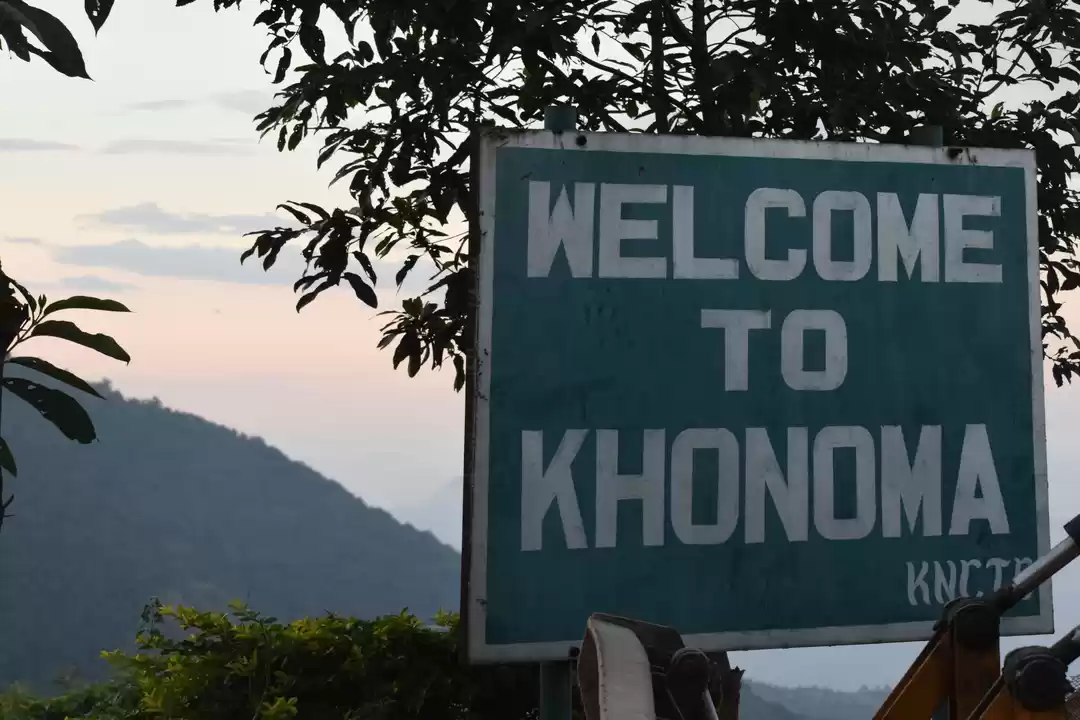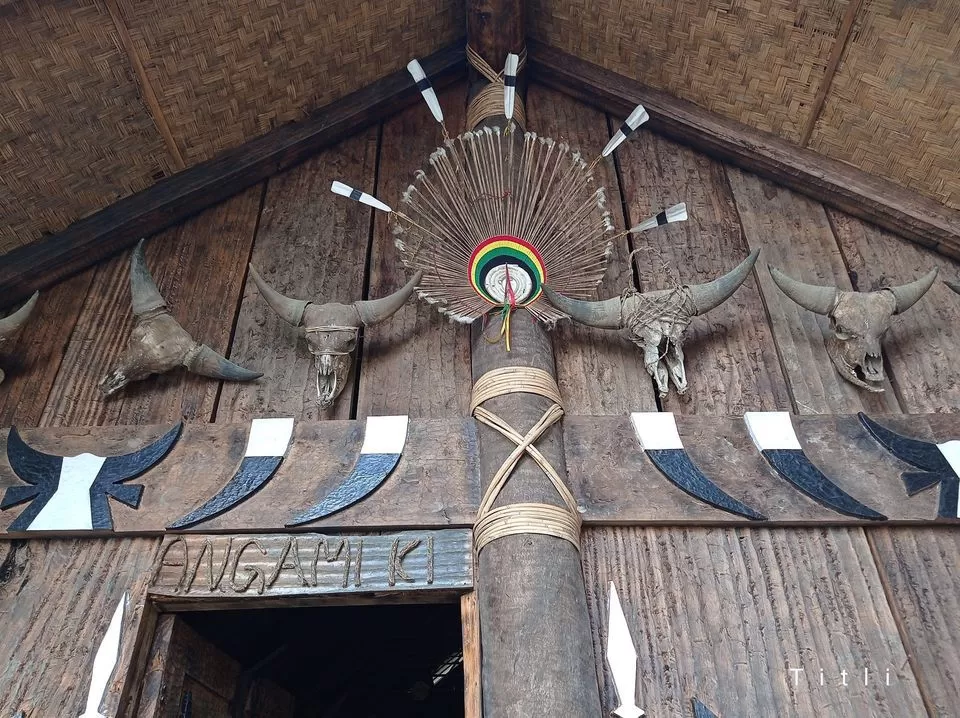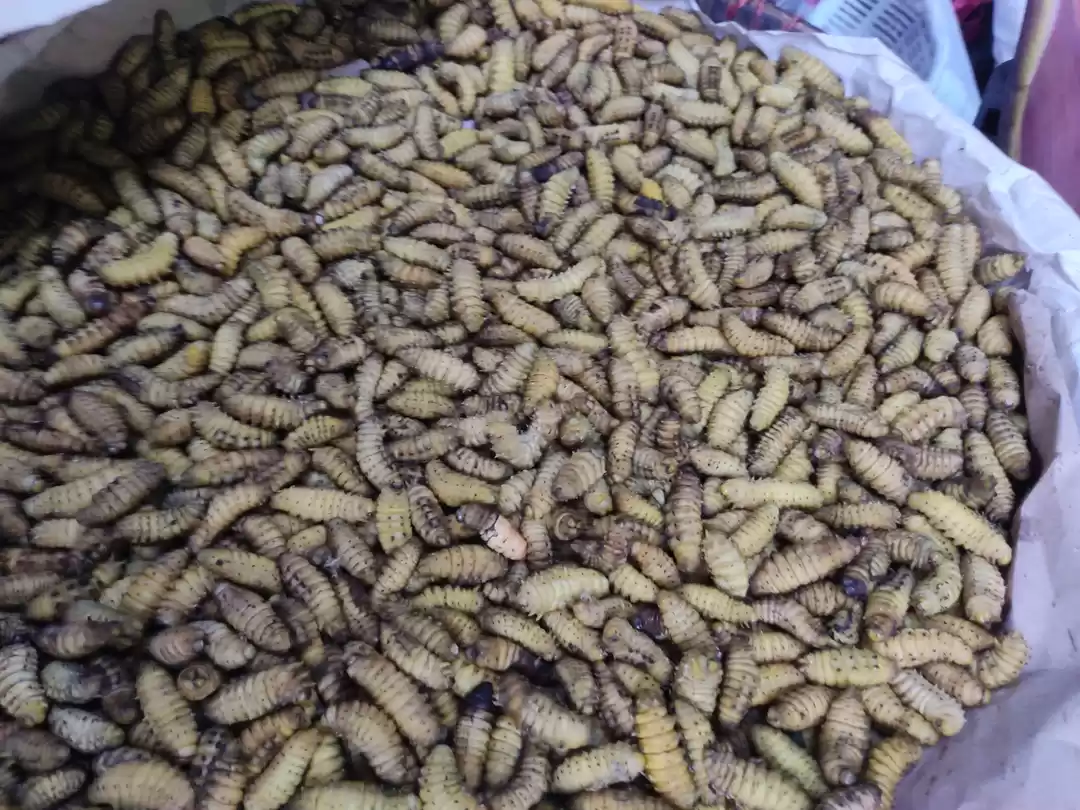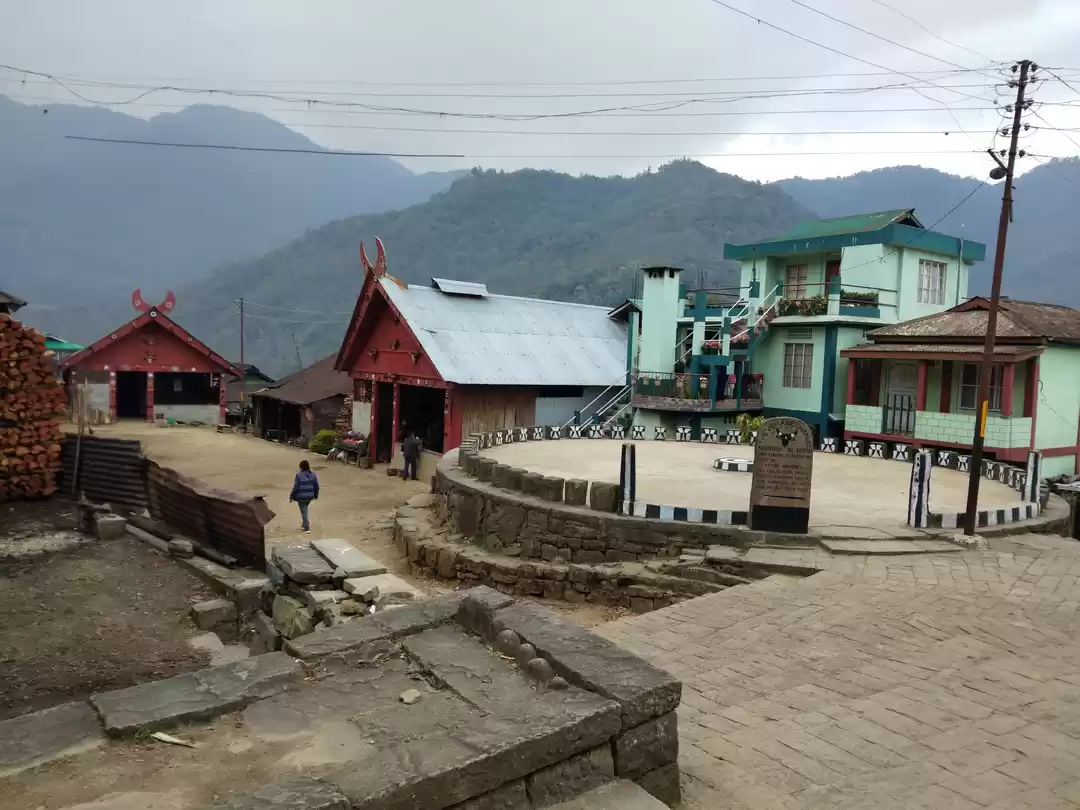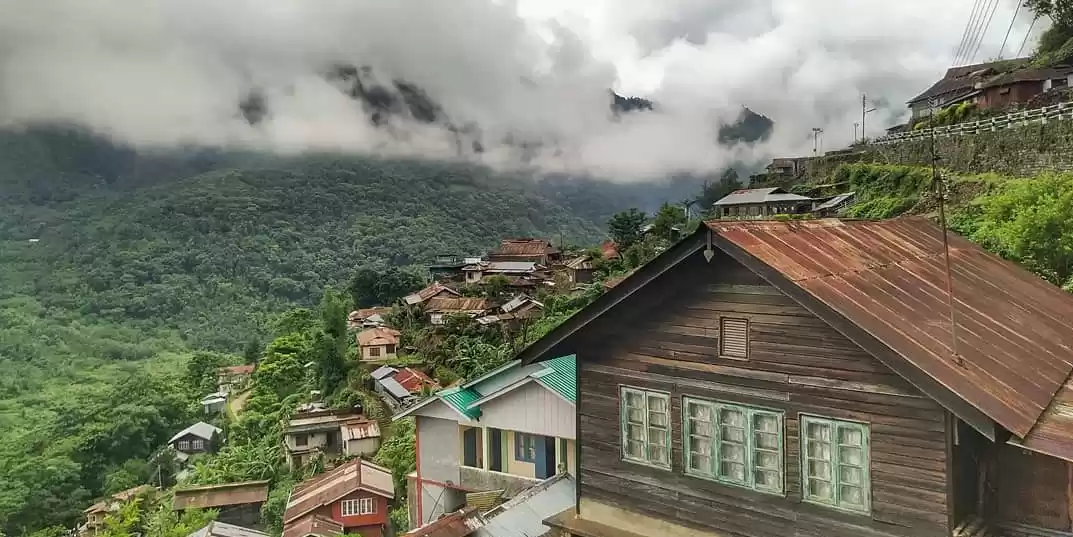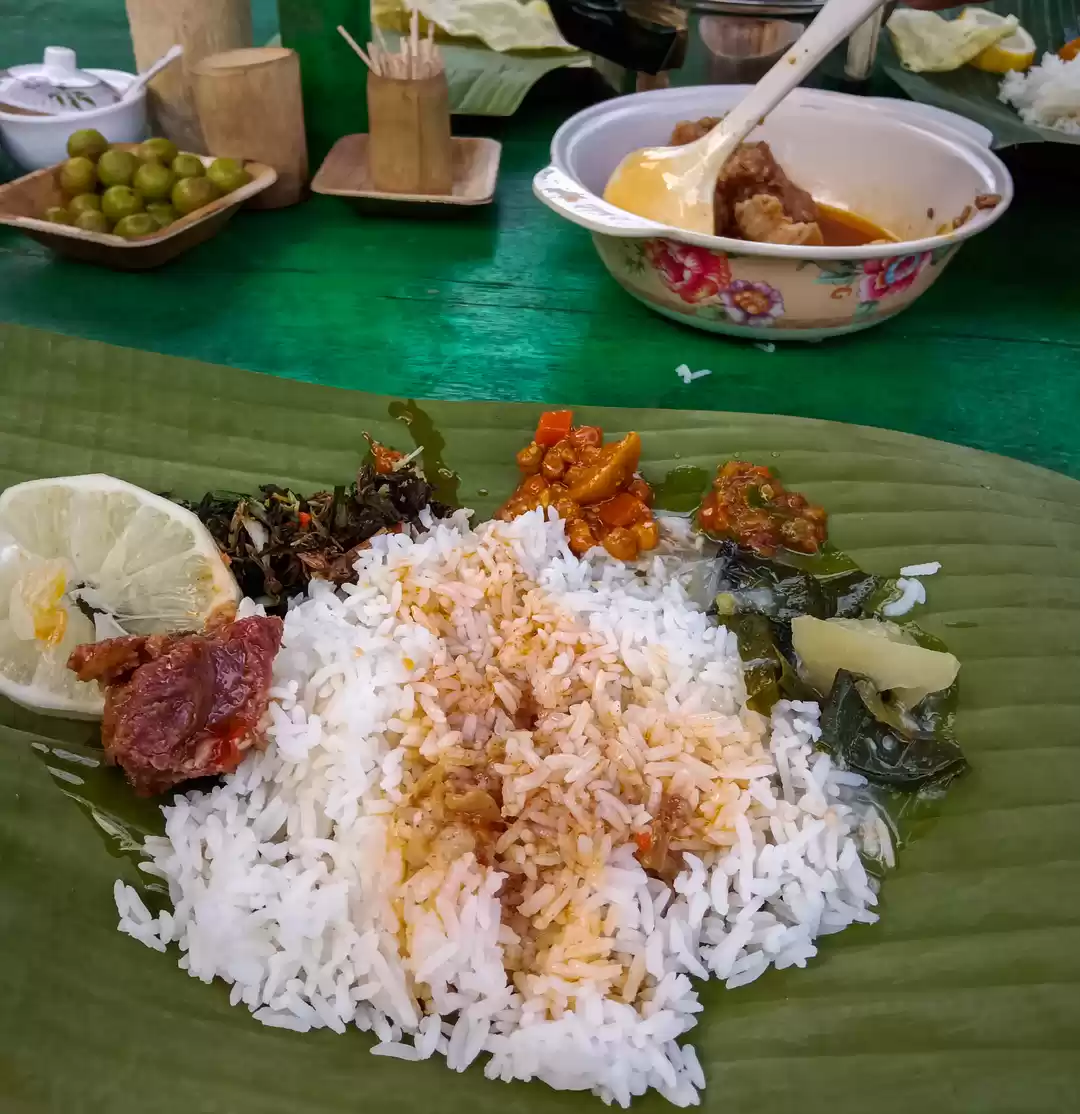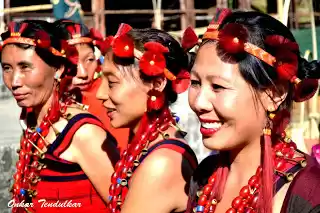
“He was killed here”, said Ms Ruzono, my guide, proudly pointing towards a small memorial with the words “ G.H Damant, killed at Khonoma, 1879. She still resonates the pride and glory of the Angami tribe who gave the fiercest and bloodiest resistance to the British forces for a period of 29 years (1850 – 1879).

The three small forts in the village and sights of old muzzle loaded long guns outside few homes bear testimony to the staunch resilience. Damant, a British political officer, despite repeated warnings, entered the village with his army. The tomb is regarded as the testament of legendary bravery shown by the villagers against the mighty Britishers. The transition of the village from a war cradle to Asia’s First Green Village is exemplary.

An hours drive from the state capital of Kohima, Khonoma Village is nestled inconspicuously amidst verdant green hills and terraced ochre coloured rice fields. Khonomo produces around 60 varieties of rice and close to 40 types of organic crops in a year.

This 700 year old village is spread over an area of more than 120 sq.km. Sleepy and sunbaked, most of the houses are made up of stone with few of them flaunting brightly coloured plasters, peeling away in patches revealing timber and bricks beneath.

British Invasion
The Angami tribe of Khonoma Village hadn’t even seen what guns look like until the invasion of the British Army. They picked up these ammunition during the war and learned how to use it depicting the remarkable adaptability to changing situations. Few of these guns are still on show in the village.

The village was divided into three hamlets. Each of these settlements was fortified to guard against invasion.

Most of the doors in these forts were painted with the traditional Naga painting. My guide Ms. Ruzono explained to us the significance of the circular eyes which were regarded as the “Guarding Eyes” for the villagers.

Repeated attempts were made by the British to capture Khonoma. The Angamis known for their bravery, martial skills and strategic expertise gave the transgressors staunch resistance for 29 years. Bloody and spine-chilling tales of the brutalities incurred by the Britishers remain fresh in the mind of the villagers. These stories, narrated over by generations are deliberately remembered to appreciate the sacrifices made by the ancestors for the pride of the tribe and the village.
The Unique Conservation
The entire village is surrounded by densely forested slopes gliding down into gorgeous terraces of paddy fields.

The unique ecosystem of Khonoma supports rich species of flaura and fauna. It is home to numerous plant species, wild fruits, vegetables, mushrooms and even natural dyes. Close to 200 bird species are found here. Tragopan – the state bird of Nagaland due to rampant hunting was endangered and faced imminent extinction. In 1993, more than 3000 Tragopans were reportedly killed for their meat. Despite bird hunting being a way of life for the Nagas, the Khonomo village decided to reserve an area of 20 sq km as Tragopan Sanctuary – India’s first community-led sanctuary. Contrary to Naga culture, logging, hunting, and Jhum cultivation (the practice of burning a field once harvested) is banned here.

Buoyed by the villagers’ initiative, the State Government spent 3 cr for making Khonoma a ‘Green Village’. It was inaugurated and recognized as one in 2005 by Chief Minister Mr. Neiphiu Rio.
Retail Therapy
Apart from cultivation, the villagers also make handmade shawls which are known for their intricate design and thread quality. Sweaters, bed sheets and carpets are also made here. There is no retail shop as such. One has to buy directly from the weavers. As per the rules and regulations, Khonoma Village can only be visited with a recognized guide. Ms. Ruzono, from Eastern Green Tours, was my designated person. Ms. Ponyaki (in the pic) was kind enough to invite me to her home and show the process of hand weaving.

Exploring the Village
Navigation through Khonoma is through series of winding steep stone steps surrounded by blooming flowers and black chillies (a specialty here).

As per his parents, he has still not overcome the grief. Intermittently, he stands near the cross in sorrow. Angamis practice the ritual of burying the dead near their home with a belief that they should be placed close to family. I tried to cheer him up with a chocolate. He took it, but it couldn’t bring a smile on his face.
At the lower echelons of the village, I saw a unique rounded stone slab around 10 meters in diameter. Small square shaped stones are placed all along its periphery. This place was called “Dahu” – a place where all village announcements were made. Adjacent to this is the community kitchen which is used to make food for the entire village during festivals and important ceremonies.

As the sun descended, it was time to head back to Kohima. I left with an inexplicable warmth and understanding of the place.

At the lower echelons of the village, I saw a unique rounded stone slab around 10 meters in diameter. Small square shaped stones are placed all along its periphery. This place was called “Dahu” – a place where all village announcements were made. Adjacent to this is the community kitchen which is used to make food for the entire village during festivals and important ceremonies.
The rich history, profound tales of bravery and chivalry, the community camaraderie and the unique conservation effort makes Khonoma a model example for villages across the state and country.

Fact File:
Getting There: There are daily flights from Kolkata to Dimapur. Kohima is 3.5 hrs from Dimapur. Cabs charge Rs 2000 onwards one way. Khonoma is 20kms away from Kohima. A one day trip is sufficient to explore this village.
Best Time to Visit: October to February
Tour Agency: It is imperative to hire a tour guide/agency to visit Khonoma. I took the services of Eastern Green Tours. They provided end to end services. Hotel pickup – Entry to the village – Detailed Information about the Village – Food – Hotel Drop.
Accommodation:
a) De Oriental Grand: It is the most luxurious option available in this rustic hill town
www.deorientalgrand.com
b) Hotel Vivor: It is another fine hotel replete with all basic amenities. It is known for its impeccable hospitality
www.niathugroup.com/hotel-vivor-home



